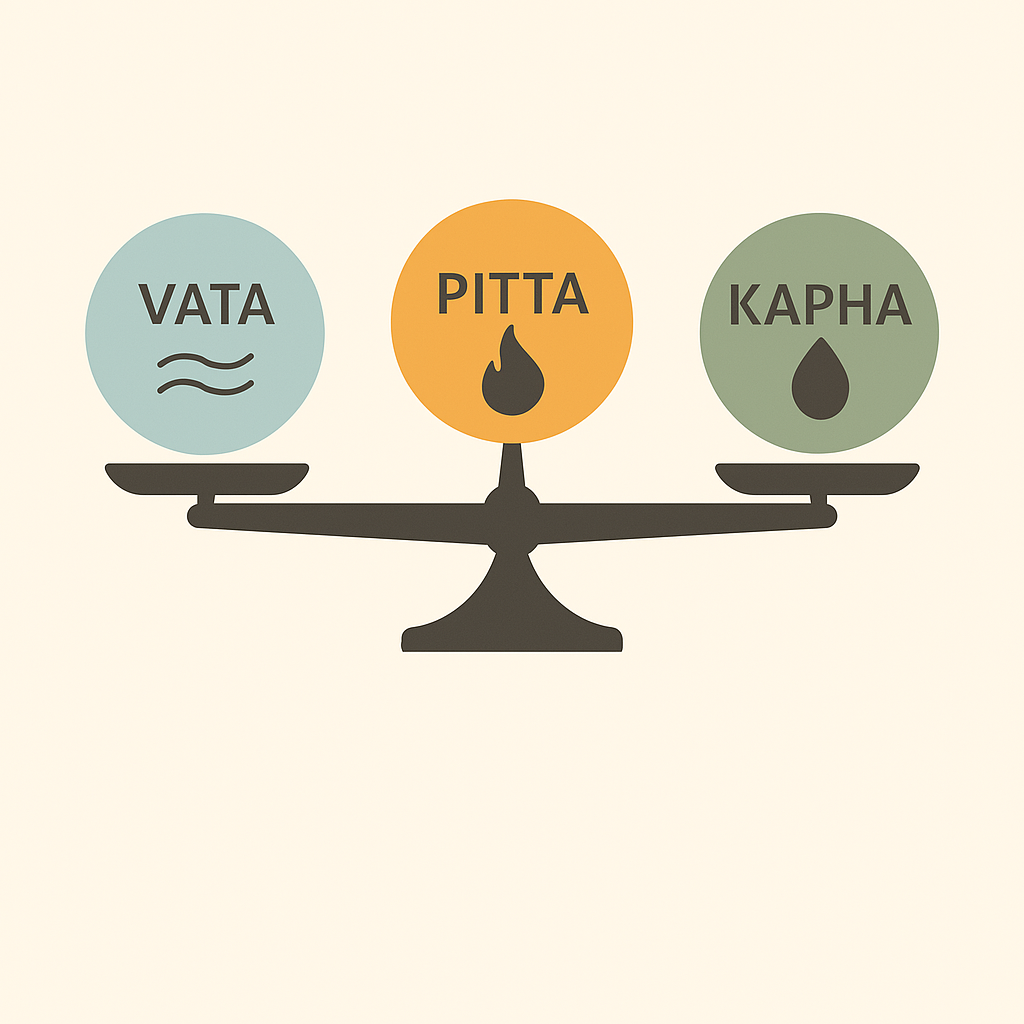The Philosophy of Balance: How Ayurveda Defines Health

Ayurveda defines health as dynamic balance—of doshas, digestion, tissues, mind, and lifestyle—creating resilience, clarity, and harmony with nature, self, and the world.
In Ayurveda, health is not merely the absence of disease—it is a state of balance and harmony across the body, mind, senses, and spirit. This holistic view originates from the Sanskrit phrase "Swasthya," which means "to be established in the Self." According to classical Ayurvedic texts, a person is considered healthy when the doshas (Vata, Pitta, Kapha), the digestive fire (Agni), the bodily tissues (Dhatus), the waste products (Malas), and the mental, sensory, and spiritual faculties are in a state of equilibrium. This balance creates vitality, clarity, resilience, and inner peace.
The Tridosha System: Dynamic Forces in Motion
The foundation of Ayurvedic physiology rests on the Tridosha theory, which describes three primary biological energies:
- Vata (air and ether): governs movement, nerve impulses, and circulation.
- Pitta (fire and water): governs digestion, metabolism, and transformation.
- Kapha (water and earth): governs structure, lubrication, and immunity.
These doshas exist in every person in unique proportions, known as one's Prakriti or constitution. Balance of the doshas supports health, while their disturbance or Vikriti leads to disease. A balanced state means that each dosha performs its function without overpowering the others or falling into deficiency.
Agni: The Digestive Fire as a Cornerstone of Health
No concept in Ayurveda is as central to health as Agni—the biological fire that governs digestion, absorption, and cellular metabolism. When Agni is strong and balanced, food is properly digested, nutrients are assimilated, and waste is efficiently eliminated. When Agni is weak or irregular, undigested food accumulates as Ama (toxins), which disrupts cellular communication and leads to imbalance.
There are 13 forms of Agni, but Jatharagni—the digestive fire in the stomach and intestines—is the most important. Ayurveda emphasizes regulating Agni through appropriate diet, meal timings, spices, and mindful eating.
Dhatus and Malas: Building and Eliminating with Intelligence
Ayurveda identifies seven Dhatus, or bodily tissues, which provide structure, support, and function:
- Rasa (plasma/lymph)
- Rakta (blood)
- Mamsa (muscle)
- Meda (fat)
- Asthi (bone)
- Majja (marrow/nervous tissue)
- Shukra/Artava (reproductive tissue)
Each tissue is nourished sequentially, and imbalance in one dhatu can cascade into others. Similarly, Malas—urine, feces, and sweat—must be expelled regularly and appropriately. Improper elimination leads to toxin buildup and contributes to disease. Health exists when these tissues are well-nourished and the waste systems function optimally.
The Mind-Body Connection: Manas and Gunas
Ayurveda holds that Manas (the mind) is just as important as physical systems. The mind is shaped by three Gunas:
- Sattva: purity, harmony, clarity
- Rajas: action, passion, restlessness
- Tamas: inertia, confusion, darkness
A sattvic mind supports healing and health, while excess rajas or tamas can aggravate doshas and disturb Agni. Emotional ama—undigested feelings like anger, grief, or fear—can accumulate just like physical toxins and manifest as illness. A balanced mind reflects in calm, resilience, and discernment.
Seasonal and Daily Rhythms: Aligning with Nature
Health also depends on one's alignment with nature’s cycles. Ayurveda recommends living in sync with the circadian rhythms (Dinacharya) and seasonal rhythms (Ritucharya). Waking, eating, working, and resting at the appropriate times helps regulate the nervous system, hormonal cycles, and digestion. Disregarding natural cycles—such as eating late, sleeping at dawn, or ignoring seasonal needs—leads to subtle but profound imbalances.
Harmony with the Self and Environment
Ayurveda recognizes that well-being extends beyond physiology. True balance involves a harmonious relationship with one’s values, purpose (Dharma), relationships, and environment. This integrative view means that a person’s emotional and spiritual fulfillment is as essential as their physical health.
Ayurvedic healing includes practices like meditation, mantra, sacred rituals, self-inquiry, and service—not just herbs or food. It emphasizes self-awareness, ethical living, and cultivating a deep sense of presence.
Conclusion: Health as Dynamic Balance
Ayurveda does not promise immunity from all diseases—but it offers the tools to understand what balance feels like and how to return to it when disturbed. Health is seen as a dynamic equilibrium—constantly responding to internal and external inputs.
To be healthy in Ayurveda means being able to digest food, experiences, and emotions with strength and clarity; to feel light in the body and calm in the mind; to maintain enthusiasm for life; and to experience deep connection with oneself and the world.
In this paradigm, balance is not a fixed destination—it is a living process of observation, adjustment, and return. It is the art of staying centered in a constantly shifting world.




